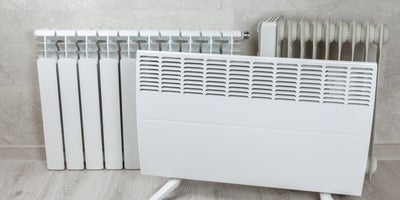How to Replace a Radiator

Replacing a radiator? It’s easier than you might think. Many come with everything you need to fix them to the wall, giving you one less thing to worry about. As for the process, we’ve put together this handy step-by-step guide to help you replace yours.
Choosing the right radiator
When choosing your new radiator, firstly consider the pipe centres. It’s always a good idea to select a replacement radiator with pipe centres that match your existing pipework. If this isn’t possible, a plumber will need to reposition your new valves.
You’ll also need to check what your wall is made out of. If it’s solid masonry, you have the choice of any size or style of radiator as the wall can hold more weight. If it’s plasterboard, you should use a stud detector to identify where the wall supports are; these are what you’ll need to screw the radiator’s brackets into. If this isn’t possible, we recommend using wall plugs.
As there are many different styles of radiators available, it’ll be easy to find one that fits in with your décor. Horizontal radiators are the most common design, but if you’re working with a small space, a vertical radiator might be a better option. It’s also worth considering what your chosen radiator is made from as some materials (e.g. aluminium) heat up quicker than others, and some (e.g. mild steel) are more affordable than others. This way, you can find an option to suit your preferences and budget.
Lastly, you have the choice between single or double panel radiators, with double panel designed to provide 40-80% more heat output. In terms of aesthetics, column radiators provide a more traditional look, and flat panel radiators are more contemporary and minimalistic.
Replacing your radiator
It’s time to prep for replacing your radiator. Below you’ll find all the tools needed for a successful replacement, as well as a step-by-step guide on the process.
You will need:
New radiator with valves and fixings
Trays and towels (for water spillage)
Step 1: switch off the heating and water supply
Step 2: drain the old radiator
Step 3: hang the new radiator
Step 4: connect the radiator
Step 5: bleed and rebalance
More inspiration







